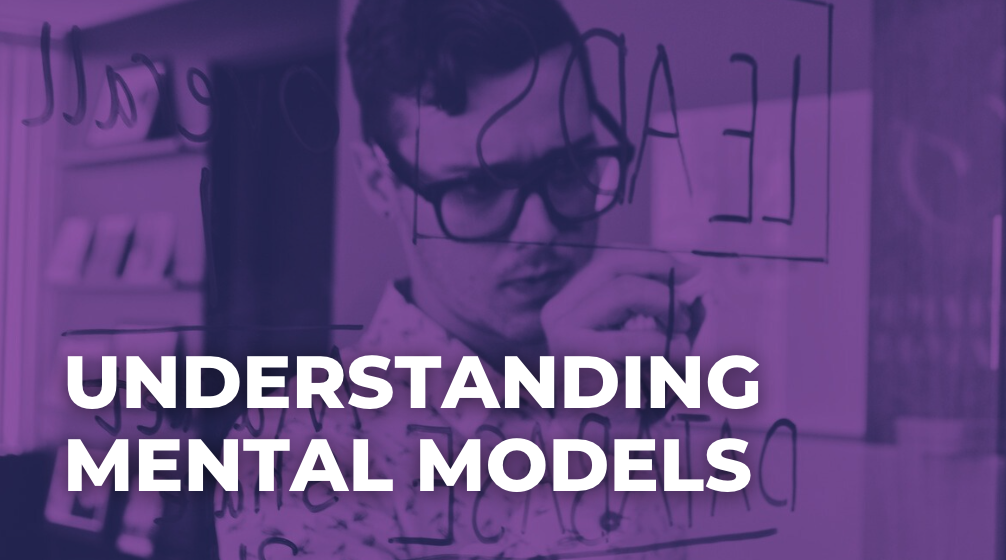How can understanding mental models transform your web design process? These cognitive blueprints shape perceptions and decisions, leading to intuitive, user-centered designs. Unlock the power of mental models to enhance decision-making and user experience in web design. Elevate your design strategies today.
Grasping Mental Models
Mental models are crucial for effective web design. These frameworks shape how we see and interact with the world. They help us predict outcomes and make smart decisions.
Mental models are like blueprints for our minds. They guide how we tackle problems and systems. It’s about grasping users’ expectations and how they process information.
Why Mental Models Matter:
- Interpretation: They help us understand complex information.
- Prediction: They let us foresee user behaviors and reactions.
- Decision-Making: They shape our choices by giving us a way to weigh options.
Mental models help create user-friendly web experiences. When designs match mental models, usability and satisfaction improve. This creates intuitive, smooth interfaces.
Using mental models can enhance how users interact with your website. This boosts user experience, engagement, and loyalty. Grasping mental models is vital for creating powerful, user-centered designs.
Why Mental Models Matter
Understanding mental models is key for effective decision-making in web design. These models shape our perception and behavior, playing a crucial role in how we interpret and respond to information. They aren’t just abstract concepts; they are tools that help us navigate complex situations.
When we apply mental models, we can tackle challenges more creatively. They provide a framework for understanding problems, generating solutions, and improving our decision-making skills. Having a diverse set of mental models is like having a toolkit for various scenarios.
Here’s why mental models are important:
- Guiding Perception: They help us see the world through different lenses, enabling us to perceive situations more clearly.
- Influencing Behavior: They impact our actions and reactions, shaping how we interact with our environment.
- Enhancing Problem-Solving: They offer different approaches to problem-solving, making it easier to find effective solutions.
- Improving Decision-Making: They assist in weighing options and making informed choices.
- Fostering Creativity: They encourage thinking outside the box, leading to innovative ideas and solutions.
By incorporating mental models into your web design process, you enhance your ability to create user-centered designs that resonate with your audience. This approach not only improves usability but also increases user engagement and satisfaction. For more insights on creating intuitive and user-focused websites, explore our articles on essential web design concepts and user experience, which delve into strategies like optimizing sign-up processes and understanding accessible website design.

Mental Models Across Fields
Mental models aren’t just for web design. They’re essential across various fields, providing frameworks that help us make sense of information and guide our decisions. By exploring models from different disciplines, we can enhance our problem-solving skills.
In economics, mental models like cost-benefit analysis help evaluate choices by comparing potential benefits and costs. This model is key in financial decision-making, ensuring resources are allocated efficiently.
Psychology offers models such as cognitive biases, which illustrate how our thinking can be systematically skewed. Understanding these biases helps us recognize and mitigate errors in our judgments and decisions.
In systems thinking, feedback loops are central. They show how outputs of a system can influence inputs, creating cycles that affect system behavior. Grasping this concept aids in predicting how changes impact complex systems.
Here’s how these models can be applied:
- Cost-Benefit Analysis: Use it to assess project feasibility by weighing expected gains against potential costs.
- Cognitive Biases: Identify biases that might cloud your judgment, improving decision accuracy.
- Feedback Loops: Understand cause and effect in systems, helping to anticipate outcomes of design changes.
- First Principles Thinking: Break down complex problems to their basic elements, encouraging innovative solutions.
- Pareto Principle (80/20 Rule): Focus on the 20% of actions that yield 80% of results, optimizing efficiency.
By mastering these models, you equip yourself with a versatile toolkit. This approach enhances decision-making and problem-solving, benefiting both personal and professional endeavors.
Techniques for Better Thinking
Mental modeling techniques can sharpen your thinking and decision-making. Here are some methods to help you navigate complex situations:
Thought Experiments: These are imaginary scenarios that explore possibilities without real-world testing. They help you test ideas and understand potential outcomes.
Systems Thinking: This approach examines how parts of a system interact. It gives you a big-picture view and reveals patterns, boosting your problem-solving abilities.
Scenario Analysis: This technique helps you envision different futures and plan for them. It prepares you for surprises and leads to smarter decisions.
Power-Law Analysis: This method finds small changes that create big impacts. It helps you focus on what truly matters, leading to better results.
Sensitivity Analysis: This approach shows how changing one factor affects others. It helps you grasp relationships and make solid decisions.
These methods sharpen your thinking. By using them, you’ll improve your problem-solving and web design skills, particularly when creating wireframes that serve as essential blueprints for aligning goals and enhancing user experience. For more insights into the importance of wireframes in web design, explore our article on why wireframes are crucial in web design.
User Interaction and Mental Models
User interaction design hinges on aligning with mental models. These models are how users think systems should work based on their experiences. Understanding these influences can make or break your design’s success.
Users carry built-in beliefs about how an interface should function. If your design matches these beliefs, users find it more intuitive. When there’s a mismatch, frustration kicks in, affecting usability. Aligning system design with mental models is key to smoothing interactions.
Here’s how mental models can shape user interaction:
- Expectations: Users expect certain actions to lead to predictable results. Designs should meet these expectations to enhance satisfaction.
- Navigation: Users look for familiar pathways to reach their goals. Effective layout design respects these mental paths, making navigation feel natural. For an example of innovative navigation, explore the Hell Design portfolio which showcases unique navigation schemes that align with user expectations.
- Feedback: Clear feedback reassures users they’re on the right track. It aligns with their need for confirmation when interacting with digital interfaces.
- Consistency: Consistent design elements help users form reliable mental models. This consistency reduces learning curves and boosts user confidence. The importance of wireframes in creating such consistency is discussed in our Juxt Interactive showcase, emphasizing their role as foundational blueprints in web design.
Designers need to tap into these models to create interfaces that resonate. When users feel understood, their interaction with the system becomes seamless. Emphasizing user-centered design principles ensures your creations are both functional and enjoyable.
Evolving Mental Models
Mental models change as we gain experiences. They shape how we process new information and adapt to fresh challenges. Experience influences this evolution, allowing us to refine our understanding and improve decision-making.
As designers, understanding how mental models evolve helps create more intuitive designs. Familiarity plays a big role. Users prefer interfaces that align with their existing mental models. This comfort reduces resistance to change and enhances user satisfaction.
To harness evolving mental models:
- Stay Inquisitive: Keep learning and exploring to update your mental models with new insights.
- Embrace Change: Recognize and adapt to shifts in user behavior and technology.
- Leverage Familiarity: Use familiar design patterns to ease user transitions and improve usability. For instance, the importance of wireframes in aligning project goals and enhancing user experience is crucial for creating interfaces that resonate with users.
- Iterate Designs: Regularly update design elements based on user feedback and evolving trends.
- Encourage Flexibility: Design with adaptability in mind to accommodate diverse user expectations.
By understanding how mental models evolve, designers can refine their cognitive frameworks. This leads to better decision-making and more effective design strategies. Keeping mental models dynamic ensures that your designs remain relevant and user-centered.
Mitigating Risks with Models
Risk mitigation is crucial in web design. Mental models help us anticipate and manage uncertainties. They enable us to predict consequences and maintain flexibility, leading to better decisions.
We must consider unintended consequences. When making design choices, we evaluate all possible outcomes. We think beyond the obvious and consider how users might be affected in unexpected ways.
Preserving optionality means staying adaptable. Mental models keep us flexible, ready to adjust to new information or changes. This helps us respond to evolving user needs and emerging technologies.
The precautionary principle guides us to be cautious. When we identify potential risks, we take preventive action. This includes comprehensive testing and developing backup plans.
Here’s how mental models help us manage risks:
- Anticipate Consequences: We evaluate potential outcomes of design decisions to avoid negative impacts.
- Preserve Flexibility: We keep design options open to adapt to changes and new insights.
- Apply Precaution: We use cautious strategies to prevent and manage risks.
- Evaluate Continuously: We regularly assess designs to identify and address emerging issues.
For designers looking to optimize their processes, understanding the importance of wireframes in web design can be invaluable. They serve as foundational blueprints that enhance user experience and align project goals, as discussed in our article on the significance of wireframes and accessible website design.
Mental models help us confidently handle uncertainties. This results in robust designs that consistently satisfy users.
Interconnected Knowledge
Interconnected knowledge combines insights from different fields. This expands your mental models and enhances your problem-solving abilities. It prevents compartmentalized thinking, resulting in more flexible solutions.
Imagine your brain as a network, with each piece of knowledge as a node. This knowledge flows across disciplines, enabling you to apply various mental models to different situations. It’s about grasping the big picture and identifying connections you might otherwise overlook.
Why does this matter for web design? Every design choice can benefit from considering multiple disciplines. Psychology helps you understand users, economics informs value, and systems thinking reveals how components interact. For instance, exploring innovative web design concepts like pre-loaders and animated interactions can enhance user experience by incorporating engaging design elements that appeal to tech and lifestyle branding.
To build interconnected knowledge, try these:
- Read Widely: Explore books and articles from various fields.
- Engage with Experts: Connect with professionals outside your usual circle.
- Take Courses: Enroll in online courses on different subjects.
- Join Discussions: Participate in forums or groups with diverse perspectives.
These steps enhance your creativity and innovation. A diverse mental toolkit helps you approach web design challenges with fresh insights. The outcome? More intuitive, user-friendly designs.
Mental models improve decision-making and UX design. They shape our perceptions, help us understand complex information, and guide our decisions. Diverse mental models refine our thinking, improving problem-solving and decision-making.
Here’s how mental models can help you:
- Shaping Perceptions: They clarify your view of the world and help you interpret information.
- Guiding Decisions: They help you weigh options and make better choices.
- Enhancing User Experience: Designs that match users’ mental models are more intuitive and satisfying.
- Boosting Creativity: Different models spark new ideas and unique solutions.
- Fostering Adaptability: Flexible mental models help you tackle new challenges.
Mental models are vital for web design and many other fields. They help you make better decisions and create more effective, user-centered designs. Diverse and dynamic mental models help you solve problems creatively and efficiently, improving various aspects of your life.






0 Comments